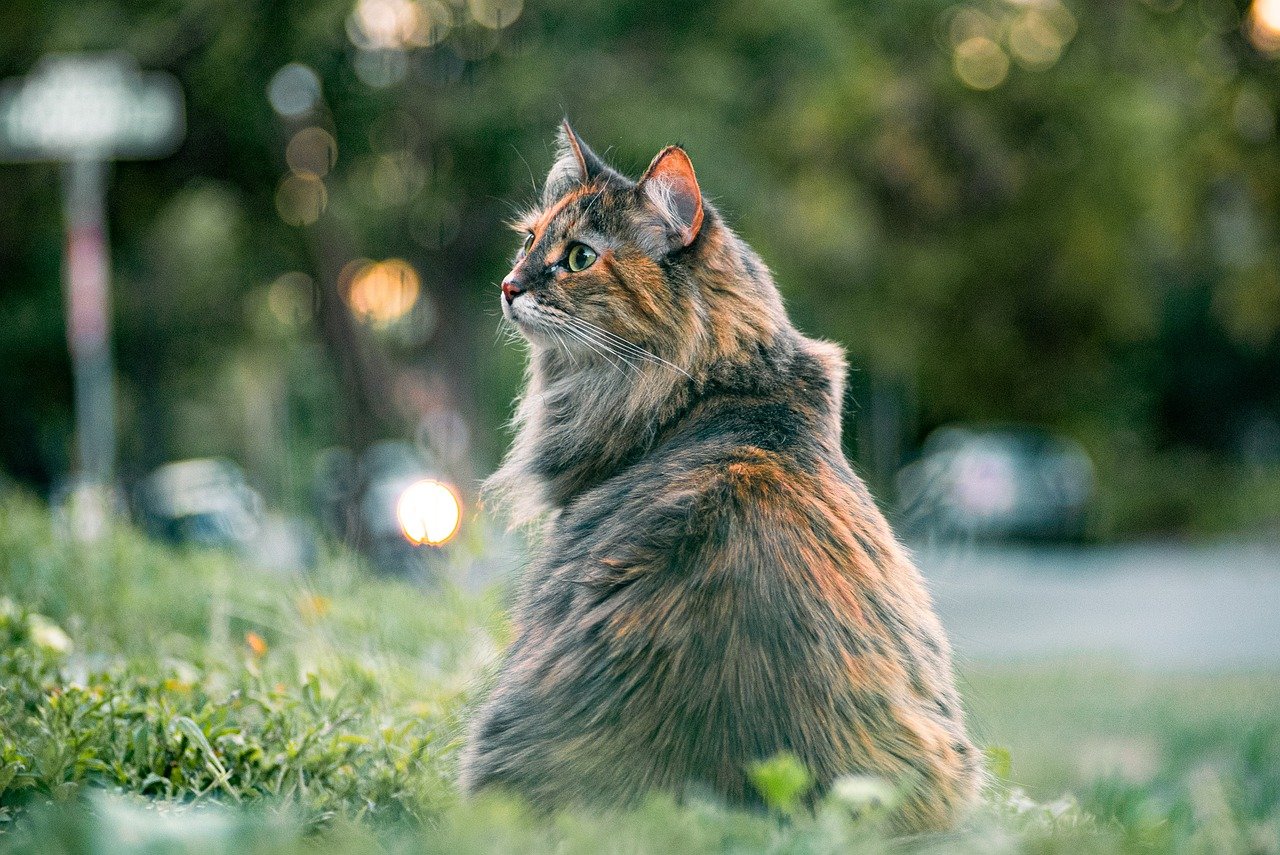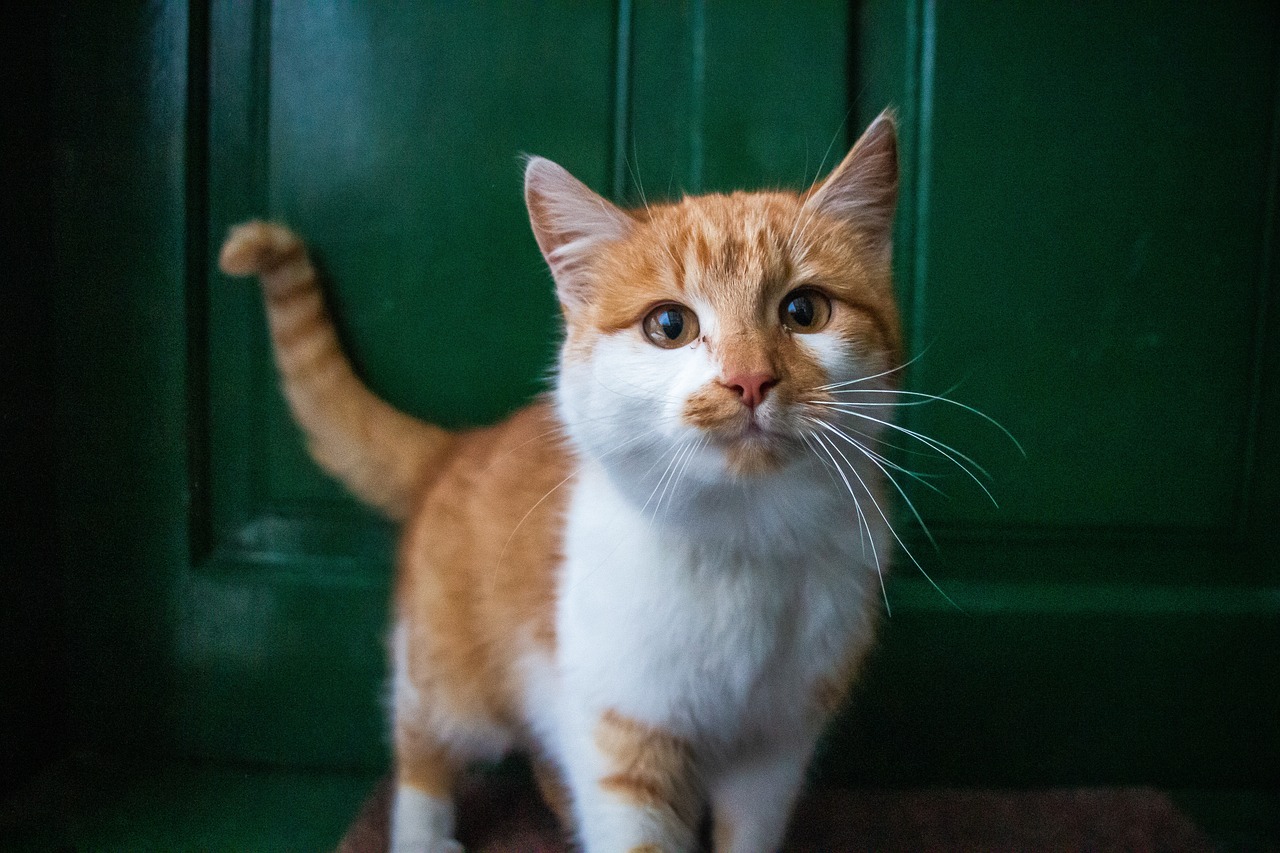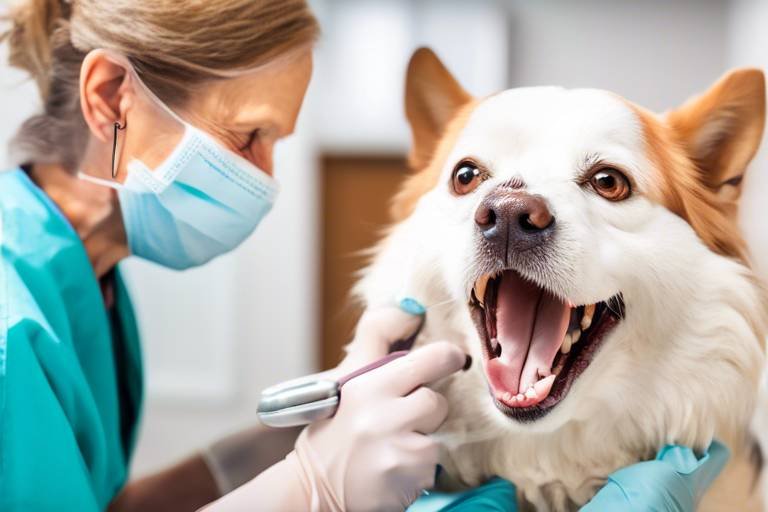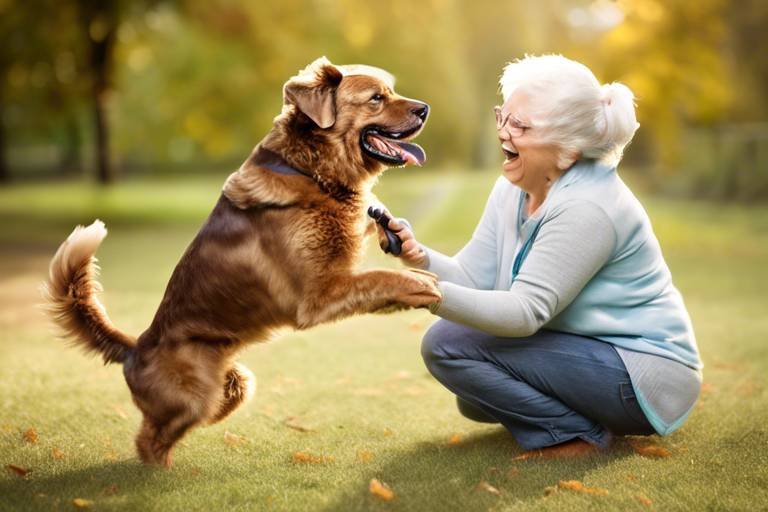Understanding the Best Exercise for Senior Cats
As our beloved feline companions age, their exercise needs change significantly. Understanding the best exercise for senior cats is crucial for their health and happiness. Just like humans, senior cats can experience a decline in energy levels, mobility, and overall well-being as they grow older. This makes it essential for cat owners to adapt their exercise routines to meet the unique needs of their aging pets. Regular physical activity not only helps maintain a healthy weight but also improves mobility and enhances their quality of life.
So, what does the best exercise look like for our senior furballs? It’s all about finding that sweet spot between activity and comfort. Think of it as a delightful dance where the rhythm is gentle yet engaging. Cats may not leap and bound like they used to, but that doesn’t mean they can’t enjoy a good play session! Gentle exercises, such as stretching, light play, and even short walks, can keep them active without overexertion.
Moreover, it’s important to consider the mental stimulation that comes with exercise. Cats are natural hunters, and even in their golden years, they still possess that instinct. Engaging them in activities that mimic hunting can be both physically and mentally rewarding. For instance, using feather wands or laser pointers can spark their interest and encourage movement in a way that feels natural to them.
Another aspect to consider is the environment in which your cat exercises. Indoor play activities can provide a safe space for senior cats to move around without the risks associated with outdoor play. Creating a stimulating environment with various toys can encourage them to explore and stay active. You might even consider setting up a homemade obstacle course using furniture and safe household items. This not only promotes physical activity but also allows them to explore their surroundings in a fun and engaging way.
However, outdoor exercise can also be beneficial, provided safety is a priority. Supervised outings in secure areas or on a leash can offer fresh air and new sights while minimizing risks. Ultimately, the best exercise for senior cats is one that balances their physical capabilities with their natural instincts, ensuring they remain healthy, happy, and engaged in their later years.

The Importance of Exercise for Senior Cats
Regular exercise is crucial for senior cats to maintain a healthy weight, improve mobility, and enhance their overall quality of life. Just like humans, as cats age, their bodies undergo various changes that can affect their physical abilities and health. It's essential to understand that exercise isn't just about keeping them fit; it's about keeping their spirits high and their minds engaged. Imagine a cat lounging around all day—what a sad sight! Instead, we want to see our furry friends active, curious, and enjoying life to the fullest.
One of the most significant benefits of exercise for senior cats is weight management. Obesity can lead to a myriad of health issues, including diabetes, joint problems, and heart disease. By encouraging your senior cat to be active, you help them maintain a healthy weight, which is vital for their longevity. Moreover, physical activity can improve their mobility. As cats age, they may develop arthritis or other joint issues that can make movement painful. Gentle exercise can help maintain joint flexibility and muscle strength, making it easier for them to jump onto their favorite perch or chase a toy.
Mental stimulation is another essential aspect of exercise that shouldn't be overlooked. Senior cats can become bored easily, leading to behavioral issues or depression. Engaging them in playful activities not only keeps their bodies active but also sharpens their minds. Think of it as a workout for their brains! Activities that require problem-solving or exploration can be incredibly beneficial. For instance, using interactive toys or creating a scavenger hunt around the house can keep your cat mentally stimulated while also encouraging physical activity.
In summary, exercise is a vital component of a senior cat's health regimen. It helps in:
- Weight Management: Reduces the risk of obesity-related diseases.
- Improved Mobility: Keeps joints flexible and muscles strong.
- Mental Stimulation: Prevents boredom and promotes cognitive function.
By understanding the importance of exercise for senior cats, you can take proactive steps to ensure your feline friend remains healthy and happy throughout their golden years. So, let’s get moving and make exercise a fun part of their daily routine!

Types of Exercises Suitable for Senior Cats
When it comes to keeping our beloved senior cats active, it's essential to choose exercises that cater to their unique needs. As cats age, their energy levels and mobility can decline, making it crucial to opt for gentle activities that promote movement without causing strain. Think of exercise for senior cats as a cozy stroll through the park rather than a marathon; it’s all about keeping them engaged and happy while respecting their physical limitations.
One of the best ways to encourage activity is through indoor play activities. These can be incredibly beneficial, providing both mental stimulation and physical exercise. Toys like feather wands and laser pointers can entice senior cats to move around gently, allowing them to engage their natural hunting instincts without the risks associated with outdoor play. Imagine your cat pouncing after a laser dot—it's not just fun; it’s a way for them to stretch their muscles and keep their joints limber.
Indoor play activities can be tailored to suit your cat's individual preferences and energy levels. For instance, you might consider using interactive toys that stimulate both the mind and body. These include puzzle feeders that require your cat to think and work for their treats or battery-operated mice that mimic the movement of prey. Such toys can captivate your cat's attention, encouraging them to move and think while they enjoy their playtime.
Another fun idea is to create a homemade obstacle course using furniture and safe household items. You can set up tunnels with cardboard boxes or use cushions to create a mini climbing area. This not only motivates your senior cat to exercise but also allows them to explore their environment in a playful way. Just picture your cat navigating through a maze of cushions—it's a delightful sight that keeps them active and engaged!
While indoor activities are fantastic, don't overlook the benefits of outdoor exercise. However, safety is paramount. Supervised outings in secure areas or using a leash can provide your senior cat with fresh air and new sights while minimizing risks. Just like taking a leisurely walk in the neighborhood, these outings can be refreshing for your feline friend. Always keep an eye on them, as older cats may tire more quickly than their younger counterparts.
In summary, there are various types of exercises suitable for senior cats that can enhance their quality of life. Whether it’s through interactive indoor play or safe outdoor excursions, the key is to keep things fun and engaging. Remember, just like us, our furry friends thrive on variety and stimulation, so mix things up and watch them flourish!
Indoor Play Activities
Indoor play activities are a fantastic way to keep senior cats engaged and active without the risks that come with outdoor adventures. Imagine your feline friend, once a spry hunter, now taking it easy on the couch. It's crucial to bring back that spark of excitement through gentle yet stimulating play. Activities that require minimal physical strain can still provide the necessary mental and physical engagement, ensuring your senior cat remains happy and healthy.
One of the best ways to get your senior cat moving is through the use of various toys designed to stimulate their natural instincts. For instance, feather wands can be a great choice, allowing you to mimic the movements of birds, enticing your cat to pounce and leap without overexerting themselves. Similarly, laser pointers can offer an exhilarating chase, but always remember to end the game with a tangible toy they can catch, so they don't feel frustrated. Engaging in these activities for just a few minutes daily can lead to significant benefits, such as improved mobility and a reduction in weight.
Additionally, interactive toys can play a pivotal role in keeping your senior cat entertained. These toys not only encourage physical activity but also stimulate their minds. Puzzle feeders, for example, require your cat to solve a challenge to get their treats, which keeps them thinking and moving. Battery-operated mice can dart around the floor, enticing your cat to chase them, providing a thrilling experience without the risk of injury from outdoor play.
Another innovative approach is to create a homemade obstacle course. This can be as simple as rearranging furniture or using safe household items to create tunnels and jumps. Not only does this encourage your cat to explore their environment, but it also provides a sense of adventure right in the comfort of your home. You can use cushions, cardboard boxes, and even blankets to create a fun maze. Watching your cat navigate through this course can be both entertaining and fulfilling, ensuring they get the exercise they need while having a blast.
In summary, indoor play activities are essential for senior cats, providing them with opportunities to exercise and engage their minds. By incorporating a variety of toys and interactive experiences, you can help your beloved pet maintain their health and happiness. Remember, a little creativity goes a long way in ensuring your senior cat remains active and playful!
- How much exercise does a senior cat need? Senior cats typically require about 10-15 minutes of gentle play each day, but this can vary based on their individual health and mobility.
- What are some safe indoor toys for senior cats? Safe options include feather wands, soft balls, puzzle feeders, and battery-operated toys that encourage gentle movement.
- Can outdoor play be beneficial for senior cats? Yes, but it should be supervised and in a safe environment. Always ensure they are on a leash or in a secure area to prevent accidents.
- How can I tell if my senior cat is getting enough exercise? Look for signs such as weight maintenance, improved mobility, and an overall happy demeanor. If they seem lethargic or gain weight, it may be time to increase their activity levels.
Interactive Toys
Interactive toys are a fantastic way to keep senior cats engaged both mentally and physically. Think of these toys as the *gym equipment* for your feline friend, designed not just to entertain but to stimulate their natural instincts and curiosity. Unlike traditional toys that may sit untouched, interactive toys encourage your cat to think, move, and play, which is essential for their overall health.
One popular type of interactive toy is the **puzzle feeder**. These clever devices challenge your cat to figure out how to access their favorite treats or kibble. It's like a treasure hunt where they must solve puzzles to get their reward. This not only promotes physical activity as they paw and nudge the feeder but also sharpens their cognitive skills. As they engage with the toy, they are less likely to become bored or lethargic, keeping their minds as active as their bodies.
Another excellent option is **battery-operated mice** that dart around unpredictably. These toys mimic the movements of real prey, triggering your cat's hunting instincts. Watching your senior cat chase after these little critters can be both entertaining and beneficial. It encourages them to get up and move, which can help combat the stiffness that often accompanies aging.
When choosing interactive toys for your senior cat, consider their physical abilities. Some cats may have arthritis or other mobility issues, so selecting toys that require minimal jumping or strenuous activity is essential. For instance, look for toys that involve **gentle batting or pawing** rather than those that require high jumps or rapid movements. The key is to ensure that the play remains enjoyable and does not cause any discomfort.
Here are a few types of interactive toys that can be especially beneficial for senior cats:
- Puzzle Feeders: These encourage problem-solving and slow down eating.
- Laser Pointers: Great for gentle exercise, just be sure to avoid shining it in their eyes.
- Remote-Controlled Toys: Allow you to control the movement and keep your cat engaged.
Incorporating interactive toys into your senior cat's daily routine can make playtime exciting and beneficial. Remember to rotate the toys periodically to keep their interest piqued. Just like us, cats can get bored with the same old thing, so a little variety can go a long way!
Q: How often should I play with my senior cat?
A: Aim for at least 15-20 minutes of playtime a day, broken into shorter sessions if needed. Consistency is key!
Q: Are interactive toys safe for senior cats?
A: Yes, as long as you choose toys designed for their physical abilities. Always supervise playtime to ensure safety.
Q: What if my cat shows no interest in toys?
A: Try different types of toys and play styles. Some cats may prefer softer toys, while others enjoy movement-based toys. Patience is essential!
Homemade Obstacle Courses
Creating a homemade obstacle course for your senior cat can be an incredibly fun and engaging way to encourage them to exercise while also stimulating their minds. Think of it as setting up a mini adventure right in your living room or backyard! You can use everyday household items to craft a course that challenges their agility and curiosity without overwhelming them.
Start by gathering some safe and soft items that your cat can navigate through or over. For instance, you might use cushions, boxes, or even tunnels made from cardboard. The idea is to create a path that encourages your cat to explore and move. You could set up a series of low jumps using stacked pillows or create a maze with boxes. This not only keeps them physically active but also engages their natural hunting instincts as they navigate through the course.
To make the obstacle course even more enticing, consider incorporating some of their favorite toys or treats along the way. For example, you could place a treat at the end of a tunnel or hide toys within the course that they have to find. This will motivate them to complete the course and reward them for their efforts. Just like a treasure hunt, they will be excited to discover what lies at the end!
It's important to keep in mind the physical limitations of senior cats. Their agility may not be what it once was, so ensure that the obstacles are low and safe. You want to encourage movement, not cause any injuries. Start slowly, allowing your cat to familiarize themselves with the course before attempting to navigate it at a quicker pace. You might be surprised at how much they enjoy the challenge!
Another great tip is to change the layout of the obstacle course occasionally. Just like humans, cats can get bored with the same routine. By mixing things up, you keep their interest piqued and encourage them to stay active. You can even theme your courses for special occasions or holidays to make it more exciting!
In conclusion, a homemade obstacle course can provide a fantastic way for senior cats to stay active while having fun. It’s a wonderful bonding experience for you and your furry friend, and it helps to keep their minds sharp and bodies fit. So, gather those cushions and boxes, and let the adventure begin!
Outdoor Exercise Considerations
When it comes to exercising senior cats outdoors, there are a few key considerations to keep in mind to ensure their safety and enjoyment. First and foremost, it's essential to choose a secure environment. Senior cats may not have the same agility and reflexes as their younger counterparts, making them more vulnerable to potential dangers like traffic, other animals, or even harsh weather conditions. A fenced yard or a designated cat-safe area can provide a perfect space for them to explore without the risks associated with the outside world.
Another important factor is to always supervise your senior cat during outdoor activities. While it might be tempting to let them roam free, it's crucial to keep a close eye on them. Cats can easily become overwhelmed or frightened by sudden noises or movements, leading to stress or injury. By supervising their outdoor time, you can ensure they feel secure and are less likely to encounter any unexpected threats.
Leash training can also be a fantastic option for senior cats that enjoy the outdoors. Using a harness and leash allows you to take them on short walks while keeping them safe. This method not only provides physical exercise but also stimulates their senses with new sights and smells. Just be sure to start slowly, allowing your cat to get comfortable with the harness before venturing out. Gradually increase the duration of your walks as they become more accustomed to the experience.
Additionally, consider the weather conditions when planning outdoor exercise. Senior cats can be sensitive to extreme temperatures—whether it’s the heat of summer or the chill of winter. On particularly hot days, aim for early morning or late evening walks when temperatures are cooler. Conversely, during colder months, ensure your cat is protected from the elements, perhaps by limiting outdoor time or providing them with a warm coat.
Lastly, always be mindful of your cat's health and physical capabilities. Some senior cats may have arthritis or other mobility issues that can limit their ability to engage in vigorous activity. Observe their behavior during outdoor time; if they seem tired or reluctant to move, it may be a sign that they need a gentler approach to exercise. A balance of gentle exploration and safe outdoor fun can go a long way in keeping your senior cat happy and healthy.
- How much exercise does a senior cat need?
A senior cat typically needs about 15-30 minutes of gentle exercise each day, but this can vary based on their health and energy levels. - Can I take my senior cat for walks?
Yes, taking your senior cat for walks on a leash is a great way to provide exercise and mental stimulation, as long as they are comfortable with it. - What should I do if my cat shows signs of discomfort during exercise?
If your cat shows signs of discomfort, such as limping or excessive panting, stop the activity immediately and consult your veterinarian. - Are there specific toys that are better for senior cats?
Interactive toys that encourage gentle movement, like feather wands and puzzle feeders, are excellent choices for senior cats.

Signs of Exercise Needs in Senior Cats
As our feline friends age, it becomes increasingly important to be attentive to their needs, especially when it comes to exercise. Just like humans, senior cats can experience a decline in energy levels, and recognizing the signs that they need more activity is crucial for their health. If you notice your cat lounging around more than usual, it might be time to assess their exercise routine. But what exactly should you look for?
One of the most obvious signs that your senior cat needs more exercise is a noticeable increase in lethargy. If your once playful kitty is now opting to snooze in their favorite sunny spot all day, it’s a signal that they might not be getting enough physical activity. Additionally, weight gain can be a significant indicator. If your cat seems to be packing on the pounds, it’s essential to evaluate their daily routine and consider incorporating more movement into their day.
Another behavior to watch for is irritability. Cats are creatures of habit, and if they feel restless or agitated, it could mean they’re not expending enough energy. You might notice them being more vocal or even aggressive—these changes can often stem from boredom or frustration due to a lack of stimulation. Furthermore, withdrawal from social interaction can be a sign that your cat isn't feeling their best. If they’re less inclined to engage with you or other pets in the household, it’s time to step up your game and encourage some exercise.
To help you better understand the signs that your senior cat may need more exercise, here’s a quick summary:
- Increased lethargy: Spending more time sleeping or resting.
- Weight gain: Noticeable changes in weight that may indicate inactivity.
- Irritability: Increased aggression or vocalization due to boredom.
- Withdrawal: Less interaction with family members or other pets.
Regularly monitoring your senior cat’s behavior and physical condition can help you catch these signs early. If you notice any of these symptoms, consider adjusting their exercise routine. This might include introducing new toys, engaging them in play, or even setting up a cozy space for them to explore. Remember, every little bit of movement counts!
Q: How often should my senior cat exercise?
A: Ideally, senior cats should engage in light exercise for about 10-15 minutes a couple of times a day. However, this can vary based on their individual health and mobility.
Q: What types of exercise are best for senior cats?
A: Gentle play activities like interactive toys, laser pointers, and short bursts of playtime are great options. Always ensure that the activities suit your cat’s physical capabilities.
Q: How can I tell if my cat is enjoying their exercise?
A: Signs of enjoyment include purring, playful behavior, and engagement with toys. If your cat seems relaxed and happy during and after playtime, they’re likely enjoying it!
Q: Should I consult a vet before starting an exercise routine for my senior cat?
A: Yes, it’s always a good idea to consult with your veterinarian, especially if your cat has pre-existing health conditions. They can provide tailored advice to ensure your cat’s safety and well-being.
Monitoring Weight and Activity Levels
Keeping an eye on your senior cat's weight and activity levels is like being the captain of a ship navigating through stormy waters. You want to ensure that your feline friend is sailing smoothly towards health and happiness. Regularly monitoring these aspects can help you catch potential health issues before they become major problems. It's essential to weigh your cat at least once a month, as even small fluctuations can indicate underlying health concerns.
When it comes to activity levels, consider how much your cat is moving throughout the day. Are they lounging more than usual, or do they still show interest in play? To help with this, you could create a simple tracking system. For instance, keep a log of your cat's weight along with notes about their daily activities. This can help you spot trends over time. Below is an example of how you might structure your tracking log:
| Date | Weight (lbs) | Activity Level (Low/Medium/High) | Notes |
|---|---|---|---|
| 01/01/2023 | 10.5 | Medium | Engaged in play with laser pointer |
| 01/15/2023 | 10.7 | Low | Less interest in toys, prefers napping |
| 02/01/2023 | 10.6 | High | Active during the day, chasing after toys |
In addition to weighing your cat, consider monitoring their behavior. If you notice changes in their activity levels, such as reluctance to jump or play, it might be time to adjust their exercise routine. Remember, cats are creatures of habit, so sudden changes in behavior can be a red flag. If your once sprightly kitty is now a couch potato, it’s crucial to address this quickly. A simple observation can lead to significant improvements in their quality of life.
Ultimately, the key is to be proactive. Regular check-ups with the vet can also provide insights into your cat's health and help you create a tailored exercise plan. With a little diligence and care, you can ensure that your senior cat remains an active and happy member of your family.
- How often should I weigh my senior cat?
It’s best to weigh your senior cat at least once a month to monitor any changes in weight. - What signs indicate my cat needs more exercise?
Look for increased lethargy, weight gain, or changes in behavior such as irritability or withdrawal. - Can I use treats to encourage exercise?
Yes! Treats can be a great motivator. Just make sure to balance them with your cat's overall diet.
Behavioral Changes to Watch For
As our feline friends age, it's crucial to keep a keen eye on their behavior. Just like humans, senior cats can experience changes that may indicate they need more exercise or may be facing health issues. Recognizing these behavioral changes can be the key to ensuring they remain happy and healthy. For instance, if your once playful kitty suddenly becomes a couch potato, it might be time to investigate further.
One of the first signs to look out for is increased lethargy. If your cat seems to sleep more than usual or shows little interest in their favorite activities, this could be a red flag. Cats are naturally curious creatures, so a sudden disinterest in play or exploration can indicate that they are not feeling their best. Additionally, if your cat is gaining weight, it could be a sign that they are not getting enough exercise. Weight gain can lead to a myriad of health problems, including diabetes and joint issues, which can further inhibit their mobility.
Another behavioral change that may signal a need for more physical activity is irritability or withdrawal. If your cat becomes more easily agitated or prefers to hide away rather than interact with family members, this could indicate discomfort or boredom. Cats thrive on mental and physical stimulation, so a lack of exercise can lead to frustration. It's essential to observe how your cat interacts with their environment and other pets. A once social cat that suddenly isolates itself could be trying to communicate that something is off.
To better understand these changes, consider keeping a behavior log. Documenting daily activities, eating habits, and any noticeable shifts in mood can help you identify patterns over time. For example, if you notice your cat is more active after certain types of play or treats, you can adjust their routine accordingly. This log can also be helpful when discussing your cat's health with your veterinarian, providing them with valuable insights into your pet's behavior.
In conclusion, paying attention to your senior cat's behavior is not just about observing their playfulness or energy levels; it's about understanding their needs. By recognizing signs of lethargy, weight gain, irritability, and withdrawal, you can take proactive steps to encourage more exercise and improve their overall quality of life. After all, a happy cat is a healthy cat!
- How much exercise does a senior cat need?
Senior cats typically need about 15-20 minutes of gentle play each day to maintain their health and keep their weight in check. - What are some safe exercises for senior cats?
Gentle activities such as stretching, light play with feather wands, or interactive toys can be great options for senior cats. - How can I tell if my cat is overweight?
Check for a visible waist when looking from above and feel for ribs without excessive pressure. If you notice a lack of definition, consult your vet. - What should I do if my cat shows signs of discomfort?
If your cat appears to be in pain or discomfort, it's essential to consult your veterinarian immediately for an evaluation.

Tips for Encouraging Exercise in Senior Cats
Encouraging exercise in senior cats can sometimes feel like trying to convince a toddler to eat their vegetables—it's a challenge! However, with a little creativity and a lot of patience, you can inspire your furry friend to get moving. The key is to make exercise enjoyable and rewarding. One effective strategy is to create a consistent routine. Cats thrive on predictability, so scheduling regular play sessions at the same time each day can help them anticipate and look forward to these activities. Think of it as their daily workout—just like you might have a set time for your own fitness routine.
Another great way to motivate your senior cat is by using treats as incentives. When your cat engages in physical activity, reward them with a small treat. This positive reinforcement creates a connection between exercise and something they love, making them more likely to participate. For example, after a short play session with their favorite toy, offer them a tasty treat as a reward. It’s like giving them a high-five for being active!
Additionally, consider incorporating a variety of activities to keep things fresh and exciting. Senior cats may lose interest in the same old toys, so introducing new ones or rotating their favorites can spark their curiosity. For instance, you might use feather wands one day and a laser pointer the next. This variety can prevent boredom and encourage them to engage more. You could also create a homemade obstacle course using cushions, boxes, and other safe household items. Not only does this provide physical activity, but it also stimulates their minds as they navigate through the course.
Finally, remember to be patient and observant. Every cat is different, and some may take longer to warm up to the idea of exercise than others. If you notice your senior cat showing signs of fatigue or disinterest, it’s essential to adjust your approach. Perhaps they need shorter play sessions or more frequent breaks. By tuning into their needs and preferences, you can foster a positive environment that encourages them to stay active.
| Question | Answer |
|---|---|
| How much exercise does a senior cat need? | Senior cats typically need around 15-30 minutes of activity each day, but this can vary based on their health and energy levels. |
| What are the best toys for senior cats? | Toys that encourage gentle movement, such as feather wands, laser pointers, and interactive puzzle toys, are great for keeping senior cats engaged. |
| Can outdoor exercise be safe for senior cats? | Yes, but it’s essential to supervise them closely. Using a harness and leash can help keep them safe while enjoying the outdoors. |
| What signs indicate my senior cat needs more exercise? | Look for signs like increased lethargy, weight gain, or changes in behavior such as irritability or withdrawal, which may indicate a need for more physical activity. |
Creating a Routine
Establishing a consistent exercise routine for your senior cat is not just beneficial; it can be a game-changer in their daily life. Think of it as a comforting rhythm that brings predictability and joy to their world. Just like humans, cats thrive on routine. By setting aside specific times for play each day, you help your furry friend adapt to physical activity, making it a part of their lifestyle rather than a chore. Imagine your cat eagerly waiting by the toy box at the same time every day, tail twitching with excitement—what a delightful sight!
To create an effective routine, consider your cat's unique preferences and energy levels. Some cats may be more active in the morning, while others prefer to lounge until the afternoon. Pay attention to your cat's natural inclinations and tailor the routine to fit them. You might start with short play sessions of about 10-15 minutes and gradually increase the duration as your cat becomes more engaged. This gentle approach ensures they don’t feel overwhelmed, which is especially important for senior cats who may have reduced stamina.
Additionally, incorporating a variety of activities can keep your cat interested and excited about exercise. For instance, you might alternate between using feather wands, laser pointers, and interactive toys throughout the week. This variety not only keeps the routine fresh but also stimulates different muscles and encourages mental engagement. You could even set up a calendar to track which activities you’ve done, allowing you to mix things up and avoid monotony.
Another tip is to involve family members in the routine. This not only provides more opportunities for your cat to interact and play but also strengthens the bond between your cat and the family. Consider having a designated playtime where everyone participates, turning it into a fun family event. Just like a family game night, this shared experience can bring everyone closer together while keeping your senior cat active and happy.
Lastly, don’t forget to celebrate the little victories! Reward your cat with treats or affection after playtime. This positive reinforcement creates a joyful association with exercise, making them more likely to look forward to it in the future. Over time, your senior cat will not only embrace the routine but may even surprise you with their newfound energy and enthusiasm for play!
- How much exercise does a senior cat need? - Generally, senior cats should engage in short play sessions of about 10-15 minutes, two to three times a day, depending on their health and energy levels.
- What types of toys are best for senior cats? - Interactive toys, feather wands, and puzzle feeders are excellent choices as they stimulate both the mind and body without overwhelming your cat.
- How can I tell if my senior cat is getting enough exercise? - Look for signs like weight maintenance, improved mobility, and an overall happier demeanor. If your cat seems lethargic or irritable, it may be time to adjust their exercise routine.
- Can I take my senior cat outside for exercise? - Yes, but ensure safety first. Supervised outings in secure areas or on a leash can provide fresh air and mental stimulation.
Using Treats as Motivation
One of the most effective ways to encourage physical activity in senior cats is by using treats as motivation. Just like humans, cats love a good reward, and what better way to entice them into a little exercise than with their favorite snacks? Think of it as a game where they not only get to have fun but also enjoy a delicious reward at the end. This method creates a positive association between exercise and treats, making your feline friend more inclined to participate in activities.
When using treats, it’s essential to choose healthy options that won't compromise your cat's diet. You can opt for low-calorie treats or even use small pieces of their regular kibble as a reward. This way, you can ensure that your senior cat is getting the motivation they need without the risk of overindulgence. It’s also a good idea to consider the following:
- Portion Control: Keep the size of the treats small to avoid excessive calorie intake.
- Variety: Change up the treats occasionally to keep things exciting and maintain their interest.
- Timing: Use treats immediately after a successful exercise session to reinforce the behavior.
To make the most out of this strategy, you can incorporate treats into various activities. For instance, during indoor play, use treats to encourage your cat to chase after a toy or navigate an obstacle course. You can also hide treats around the house to motivate them to explore and move around more. This not only provides physical exercise but also engages their natural hunting instincts.
Moreover, it’s important to be patient. Some senior cats may take longer to warm up to the idea of exercise, especially if they have been less active for a while. By consistently offering treats and positive reinforcement, you can gradually build their confidence and willingness to move. Remember, every little bit counts, and even small bursts of activity can contribute significantly to their overall health and well-being.
Q: How often should I give treats to my senior cat during exercise?
A: It's best to give treats sparingly and only as a reward after exercise sessions. This helps maintain a healthy diet while still providing motivation.
Q: What types of treats are best for senior cats?
A: Look for low-calorie, high-protein treats that are specifically formulated for senior cats. You can also use small pieces of their regular food as a reward.
Q: How can I tell if my cat is enjoying the exercise?
A: Look for signs of engagement, such as playfulness, purring, and an eagerness to chase or explore. If they seem disinterested or lethargic, it may be time to adjust the activities.
Frequently Asked Questions
- Why is exercise important for senior cats?
Exercise is crucial for senior cats as it helps maintain a healthy weight, improves mobility, and enhances their overall quality of life. Just like us, staying active can keep their spirits high and prevent health issues.
- What types of exercises are suitable for senior cats?
Gentle exercises like stretching, light play, and indoor activities are ideal for senior cats. Think of it as a cozy yoga session for your furry friend—nothing too strenuous, but enough to keep them moving!
- How can I encourage my senior cat to exercise?
Encouraging exercise can be as simple as creating a routine or using treats as motivation. Try incorporating regular play sessions and rewarding them for participation. It's like turning exercise into a fun game!
- What are some signs that my senior cat needs more exercise?
Look out for changes in behavior, such as increased lethargy, weight gain, or irritability. If your cat seems less active or more withdrawn, it might be time to spice up their exercise routine!
- Are outdoor activities safe for senior cats?
Outdoor activities can be beneficial, but safety is key. Always supervise your senior cat during outings, and consider using a leash or harness to keep them secure while they enjoy the fresh air.
- What are interactive toys, and how can they help?
Interactive toys, like puzzle feeders and battery-operated mice, stimulate both the mind and body of senior cats. They encourage movement and mental engagement, making playtime a delightful challenge!
- How can I create a homemade obstacle course for my cat?
Creating a homemade obstacle course is easy! Use furniture and safe household items to create tunnels and hurdles. It’s like setting up a mini adventure park right in your living room!



















